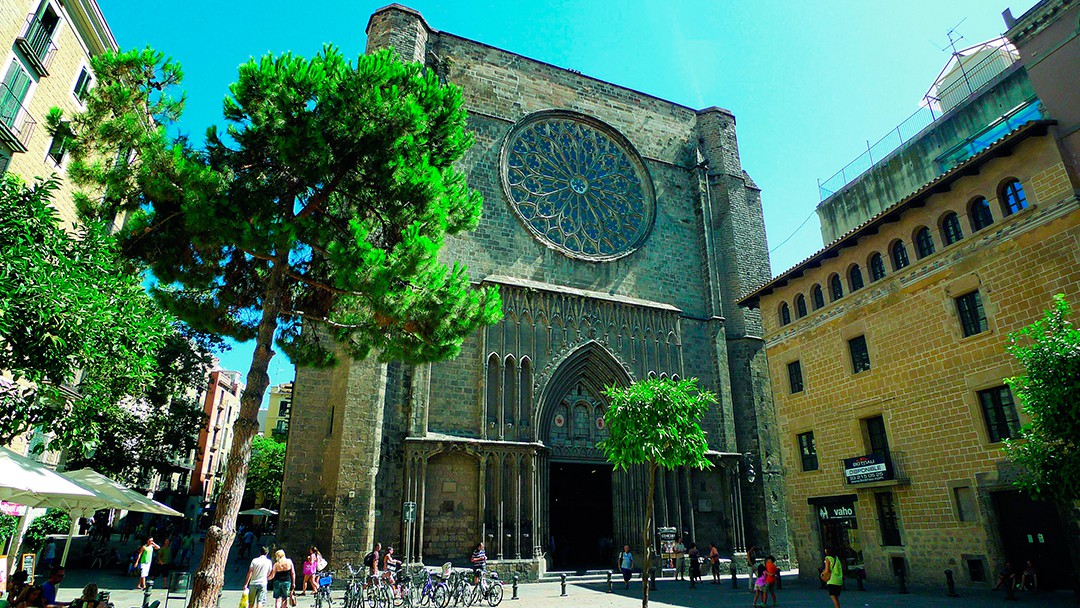meet.barcelona

Visit and love it
El Gòtic
Download date: 02/12/2025

The neighbourhood the city grew out of bears the marks of every Barcelona era, and reveals its history in every stone and in every one of its visitors' attentive glances.
-
Urban spaces
Roman and medieval essence
Entering the Gothic Quarter is to make for Barcelona’s origins, the place where two thousand years ago the Romans founded Bàrcino. Today, we can follow the traces of that Roman city thanks to preserved fragments of the walls that encompass a perimeter which still marks the typical layout of a Roman town. The cardo, located along today’s Carrer Llibreteria, the decumanus along Carrer Ciutat and the Forum, where Plaça Sant Jaume is today, in the centre. Very close to this square, going up Carrer Paradís to the doorway of the ramblers’ club, the Centre Excursionista de Catalunya, you can find a millstone that signals the highest point of Mont Tàber, a hill rising 16 m above sea level and, inside, hidden in the patio of this Gothic building, four columns are preserved from the Roman temple that stood at this point.
Roman Bàrcino was transformed into Medieval Barcelona, and at the hand of the counts and kings it became one of the most splendid cities in Christian Europe. The Jews who settled in Barcelona clustered around El Call, a network of narrow, chaotic streets with a multitude of houses, among which we can still find vestiges of that time, like the main synagogue, one of the oldest in Europe and which can be recognised by the hole on the right-hand side of the lintel.
The Middle Ages brought with them commerce, the arts and the professions, the appearance of the sober Romanesque style in buildings like the Capella de Santa Llúcia, a chapel integrated into the Barcelona’s cathedral, and the Gothic explosion, with the cathedral being the prime example, as well as other numerous unique buildings. Plaça Sant Jaume became the home of the city council and since then it has been the seat of Barcelona’s main political institutions, the City Council and the Catalan Government, in the two imposing Gothic buildings that face each other across the square.
Places with history
The narrow streets and little squares of this neighbourhood invite you to wander around and let yourself be surprised by its charm and always lively atmosphere. There are many curious little corners, like Plaça Traginers, under one of the towers on the Roman walls; Plaça Sant Just, with the oldest medieval fountain in the city and an imposing Gothic church; and the Baroque Plaça Sant Felip Neri, with a central fountain that fills it with freshness.
Painters like Picasso, Casas, Novell and Russinyol have strolled through the Gothic Quarter looking for inspiration before entering the Quatre Gats cafe, on Carrer Montsió. Gaudí also walked here as he took his daily saunter to the church of Sant Felip Neri, as did the architect Domènech i Montaner on his way to find inspiration for the Palau de la Música. Thousands of visitors walk through the Barri Gòtic everyday, following in the footsteps of history.
 :
:
Location and contact
Location and contact

El Gòtic
- Address:
- C Paradís, 1
- Districte:
- Ciutat Vella
- Neighborhood:
- el Barri Gòtic
- City:
- Barcelona
Observacions
Discover other related points of interest
-
La plaça del Rei

Pl Rei 1
-
Tamaia viure sense violencia SCCL

C Ripoll 25
-
Pla de Palau

Pla Palau 1


